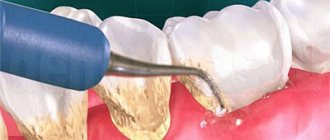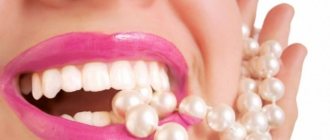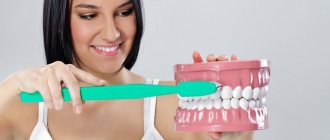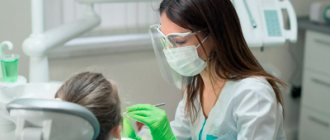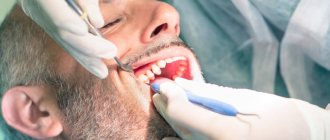Daily hygienic oral care is the key to healthy teeth and gums, as well as the digestive system. It is especially important to remember the basic rules of oral hygiene after various surgical procedures, such as sinus lifting. This manipulation is one of the most popular and widespread in dentistry around the world. Thanks to this minimally invasive operation, patients with bone deficiency are able to install and securely fix an implant in the lateral parts of the upper jaw.
The successful result of a sinus lift depends not only on the qualifications of the surgeon and the availability of modern equipment, but also on the patient’s compliance with the doctor’s recommendations in the postoperative period. In the first time after surgery, it is necessary to make some efforts to properly care for the oral cavity and modify your lifestyle. Oral care after a sinus lift includes several key points that you should pay close attention to if you are scheduled for this procedure. By following simple rules, you can prevent the development of postoperative complications and create optimal conditions for the rapid restoration of tissue damaged during osteoplasty.
Why you need to take good care of your mouth
With the introduction into practical dentistry and the improvement of various bone grafting techniques, implantation, as the most reliable method of restoring the dentition, has become available to patients with serious deficiency of bone tissue of the upper or lower jaw. Sinus lifting is considered one of the most minimally traumatic and safe operations in dentistry. There are two main types of this manipulation – open and closed sinus lift. After performing any of them, the patient must properly and regularly care for the oral cavity.
One of the main advantages of open sinus lifting is that the operation is quite effective even with pronounced atrophic processes in bone tissue. To raise the bottom of the maxillary sinus, the surgeon makes an incision in the soft tissue of the gums, which must be sutured after the remaining stages of the operation. The presence of fresh sutures in the oral cavity is one of the risk factors for postoperative complications, therefore, after an open sinus lift, you must strictly follow the doctor’s recommendations and ensure proper oral care.
With a closed sinus lift, trauma to healthy tissue is minimized, but this does not mean that after this treatment option the rules of hygienic oral care can be neglected. Although there are no incisions or stitches during a closed sinus lift, soft tissues are still injured when a small hole is made, through which the mucous membrane of the maxillary sinus is lifted and an implant is implanted. In order for the implant structure to be securely fixed, and the tissues adjacent to it not to undergo an inflammatory process, oral care after sinus lifting must be comprehensive and regular.
Oral care: main goals
Everyone knows that daily hygienic care of teeth and gums is an integral part of a healthy lifestyle. It helps keep your smile beautiful and radiant, your gums healthy, and your teeth strong. However, after performing a sinus lift, oral care is necessary not only for this. The main goals of careful oral care after this intervention are:
- Ensuring the patient's comfort in the postoperative period.
- Elimination of symptoms of inflammation, which is the body’s physiological response to even minor trauma to healthy tissue.
- Preventing postoperative wound infection.
- Creating favorable conditions for soft healing and bone tissue regeneration.
Comfort
Some patients believe that after an intervention in the oral cavity, hygienic brushing of teeth and other oral care measures will have to be forgotten for the first time. However, this is not true; you can and should feel comfortable even after performing bone grafting.
The main thing is to remember simple recommendations for proper brushing of your teeth, as well as regularly follow other doctor’s recommendations. Taking gentle oral care after a sinus lift will make you feel comfortable and confident immediately after surgery.
Elimination of the inflammatory process
Despite the low-traumatic nature of sinus lifting, the inflammatory process cannot be avoided after the operation. This is not a complication, since the appearance of slight swelling, tissue redness and soreness is considered a natural reaction of the body to even a minimal violation of the integrity of the skin and mucous membranes. Therefore, if you experience minor discomfort, pain and swelling, you should not panic.
The main thing is to properly care for your oral cavity and take medications prescribed by your doctor.
Prevention of infection
Poor oral hygiene is the main factor in the development of postoperative complications of infectious origin. Without proper care, pathogenic microorganisms multiply at an accelerated pace in the oral cavity, which, given the presence of a postoperative wound or fresh sutures, can cause serious complications.
This is why it is dangerous to forget about regular brushing of teeth and rinsing with antiseptics after performing any osteoplastic surgery. If the patient is responsible for hygienic oral care, then the risk of infectious complications after sinus lifting is minimal.
Recovery
The recovery processes in the body are influenced by many factors. When bone grafting is performed, it is very important that the osteoplastic material introduced to the patient takes root well, and that the tissues damaged during the operation heal quickly. These processes are influenced by following a proper diet, taking medications and vitamins in the postoperative period, as well as proper oral care.
If you do not pay due attention to oral hygiene after a sinus lift, the tissues will heal more slowly, and more time will have to be spent on bone regeneration, and therefore on the complete restoration of the tooth.
What does proper oral hygiene consist of?
After a sinus lift, the patient needs to pay attention to the following components of proper oral care:
- care of postoperative sutures (after open sinus lifting);
- regular teeth cleaning;
- rinsing or bathing with antiseptic solutions;
- using dental floss.
Caring for the oral cavity after a sinus lift is not particularly difficult, especially if the patient was responsible for personal hygiene before the procedure. Depending on the existing dental problems, the doctor may add any items that are necessary in this particular case.
Is it possible to smoke
What you should not do after having your teeth professionally cleaned by the dentist is go back to smoking cigarettes. Nicotine is a powerful colorant, just like coffee and wine. Resins, along with carcinogenic substances, settle on the hard surfaces of incisors, canines and molars, creating an ideal environment for the growth and reproduction of pathogenic microorganisms. Tobacco in general has a negative effect on bone tissue, promoting its destruction and killing beneficial bacteria.
When cleaning is carried out in the dental office, the protective film is removed from the enamel. As a result, the outer layer absorbs resinous compounds and acquires a yellowish tint after just a few days.
Also, during the procedure, the mucous membranes may be damaged. Toxins from cigarettes get inside and provoke a severe inflammatory process that can spread to the entire maxillofacial apparatus.
Smokers often suffer from bleeding, dry and loose gums. The capillaries narrow, and the gum tissue weakens, becomes dehydrated, and the oxygen concentration decreases. Because of this, caries, pulpitis, gingivitis, and periodontal disease occur. If you do not wait for healing and smoke, infection will occur, which can subsequently lead to destruction and loss of teeth.
Caring for sutures after surgery
The suture area is the most delicate and easily susceptible to various negative factors after sinus lifting. That is why it is advisable to start caring for the oral cavity after sinus lifting with the treatment of postoperative sutures. To speed up the healing process of sutures and minimize any external influences on them, special dental adhesive pastes and gels are used. Also, the use of these products allows you to eliminate discomfort in the oral cavity, which is caused by the presence of suture material in it. You need to apply the gel or paste every time after eating, using antiseptic agents first. After application, it is advisable not to eat for several hours.
It is very important not to disturb the suture area, limit active facial expressions, and do not touch the operation site with your tongue. It is strictly forbidden to use hot compresses, and you should also not consume hot food or drinks. To speed up the healing of sutures, it is also better not to visit saunas, steam baths and other places with sudden temperature changes.
What is tartar
Tartar is a formation that is a keratinized plaque consisting of poorly removed food debris, calcium, phosphorus and iron salts covered with a biofilm of dead bacteria.
You can find fossilized food deposits over the entire surface of the dentition, but most often the concentration is on the lower incisors, closer to the gums and on the sides.
Please note that tartar can penetrate the back wall and inside the gums. It is usually found in hard-to-reach places where it is impossible to remove food debris with a toothbrush.
Teeth cleaning
Without regular and proper brushing of teeth, oral health cannot be maintained. After a sinus lift, hygienic teeth cleaning can be done on the second day after the procedure. Regardless of what brush you used before surgery, it is recommended to use a soft toothbrush after a sinus lift. Hard bristles can aggravate the inflammatory process and injure sensitive gums.
Teeth should be brushed very carefully, carefully avoiding the intervention area. Try not to let the bristles come into contact with the area of post-operative swelling. The choice of toothpaste for cleaning depends on the needs of the patient’s teeth and gums and does not play a fundamental role after performing a sinus lift. You need to brush your teeth at least 2 times a day. You can clean the area where the implant is installed using a cotton swab or a gauze swab, which should first be moistened in a 3% solution of hydrogen peroxide.
Clinical researches
Clinical studies have proven that regular use of professional toothpaste ASEPTA REMINERALIZATION improved the condition of the enamel by 64% and reduced tooth sensitivity by 66% after just 4 weeks.
Sources:
- Report on the determination/confirmation of the preventive properties of personal oral hygiene products “ASEPTA PLUS” Remineralization doctor-researcher A.A. Leontyev, head Department of Preventive Dentistry, Doctor of Medical Sciences, Professor S.B. Ulitovsky First St. Petersburg State Medical University named after. acad. I.P. Pavlova, Department of Preventive Dentistry
- Evaluation of the clinical effectiveness of a combined drug of local etiotropic action in the treatment of inflammatory periodontal diseases (E.L. Kalichkina, E.A. Tyo, Z.Z. Abubakarova) E.L. Kalichkina, candidate of medical sciences, assistant of the department of therapeutic dentistry, Kemerovo State Medical Academy of Roszdrav, Kemerovo E.A. Tyo, MD, professor, head of the department of therapeutic dentistry, Kemerovo State Medical Academy of Roszdrav, Kemerovo Abubakarova, assistant of the department of therapeutic dentistry, Kemerovo State Medical Academy of Roszdrav, Kemerovo GOU HPE Kemerovo State Medical Academy of Roszdrav , Kemerovo
- Clinical and laboratory assessment of the influence of domestic therapeutic and prophylactic toothpaste based on plant extracts on the condition of the oral cavity in patients with simple marginal gingivitis. Doctor of Medical Sciences, Professor Elovikova T.M.1, Candidate of Chemical Sciences, Associate Professor Ermishina E.Yu. 2, Doctor of Technical Sciences Associate Professor Belokonova N.A. 2 Department of Therapeutic Dentistry USMU1, Department of General Chemistry USMU2
Hygienic baths with antiseptic
Mouth rinsing is an integral part of postoperative care. However, after a sinus lift, active rinsing of the mouth should be replaced with baths. This is due to the fact that after the operation it is necessary to avoid pressure changes in the oral cavity. Baths should be carried out after each meal; for this purpose, it is better to purchase a medicine with pronounced antiseptic properties. Chlorhexidine, Miramistin, Tantum Verde and other antiseptics widely used in dentistry and otorhinolaryngology are good options.
The bath should be done before applying the adhesive paste or gel. To do this, after eating, you should take a small amount of antiseptic and distribute it in the oral cavity, mainly on the side of the operation. There is no need to rinse your mouth; you just need to hold the solution in your mouth for 2-3 minutes and then spit it out. This will be enough to get rid of pieces of food, relieve inflammation and have an antimicrobial effect on the oral mucosa. Baths should not be done too often; 3-4 times a day after main meals will be enough.
Types of Tartar
Fossils on enamel come in different types depending on location. So they distinguish:
- supragingival stones - formed on the first molars (lateral) and front or lower teeth;
- subgingival - hard areas that penetrate soft tissue;
- stone bridge – covering the main and adjacent teeth.
Methods for removing tartar
- Physical method. Consists of mechanical destruction of deposits using a dental instrument with a thin tip. Modern medicine uses the Air flow system. Fine particles of soda are applied under high pressure, causing a stream of air containing the powder to knock the fossils off the tooth. A subsequent stream of water washes away the separated particles.
- Chemical method. Allows you to remove formations with the help of compounds that dissolve the basis of tartar - deposits of mineral salts. A composition is applied to the teeth that softens plaque, but does not cause significant harm to the enamel. Then the impurities are removed.
- Ultrasound. Ultrasonic waves do not injure teeth and gums. Contraindicated in patients using a pacemaker.
- Laser. The laser method can be used specifically in dentistry for various procedures. It is one of the most effective and expensive procedures. The laser beam is very thin and can be used precisely. This way, only truly unwanted tissue is destroyed. Healthy tissues are preserved. Local anesthesia is often not required. Laser treatment does not cause noise or vibration like drilling. The virtually painless treatment is especially suitable for anxious patients.

